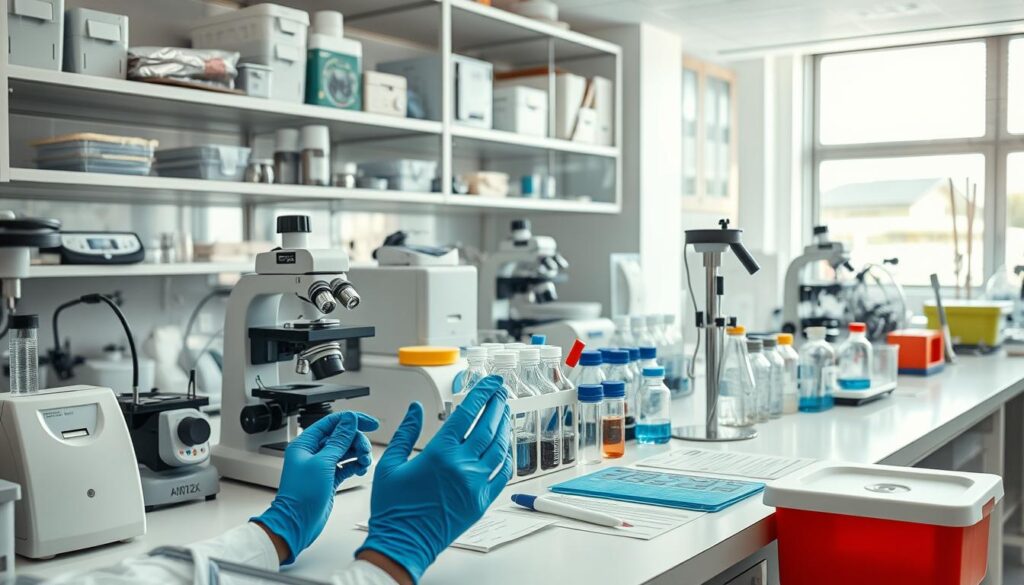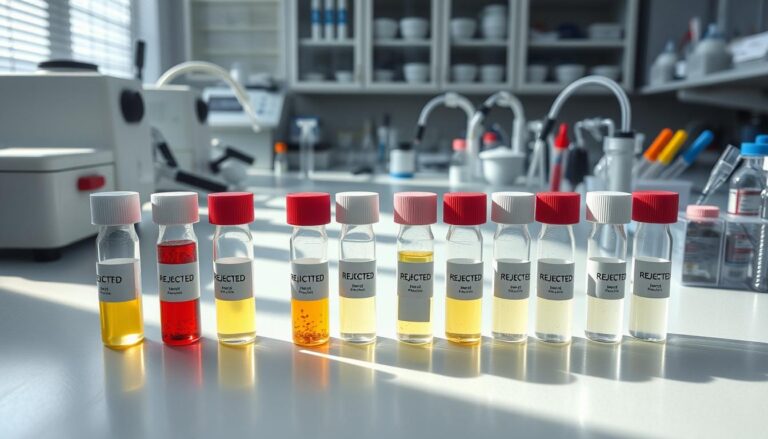Common Laboratory Errors and How to Avoid Them: A Complete Guide to Lab Testing Error Prevention
How can we stop laboratory errors in the medical field? This is a big concern. We will look at ways to improve lab testing accuracy and quality control in diagnostics. This includes preventing mistakes in lab analyses and reducing errors in medical testing.
The diagnostic testing process is complex. It involves many steps, tools, and people’s skills. This makes preventing lab testing errors very important. It ensures quality control in diagnostics and prevents mistakes in lab analyses.

Knowing the common types of errors in lab testing is key. These include environmental, procedural, human, and instrumental errors. By understanding these, we can work to improve lab testing accuracy and quality control. This will help reduce errors and improve patient care through effective error reduction in medical testing at our diagnostic centre in Yelahanka, we prioritize strict quality control measures to ensure accurate lab results and reliable medical testing.
Understanding Common Sources of Laboratory Testing Errors
Laboratory testing errors can greatly affect patient care and outcomes. It’s key to know where these errors come from. These errors fall into three main areas: before, during, and after testing. By pinpointing these sources, we can take steps to prevent mistakes and ensure accurate lab results.
Pre-analytical errors make up to 70% of all lab mistakes. These happen during sample collection, handling, and preparation. To cut down on errors, it’s vital to stick to the right protocols for collecting and handling samples. This means using the correct tubes, labeling them correctly, and keeping them at the right temperature.
Common pre-analytical mistakes include mislabeling, contamination, and not having enough sample. We can lower these errors by organizing labs better and using teamwork. Also, strict rules for avoiding contamination and training on handling samples and PPE are crucial.
By knowing where lab errors come from and taking steps to prevent them, we can make diagnostic testing more accurate. This leads to fewer mistakes in labs and better care for patients.
| Error Phase | Error Type | Frequency |
|---|---|---|
| Pre-analytical | Sample mislabeling | High |
| Pre-analytical | Contamination | Medium |
| Post-analytical | Manual data entry mistakes | Low |
Essential Lab Testing Error Prevention Strategies and Best Practices
To avoid mistakes in lab testing, we need strong quality control. This means using advanced data systems and training lab staff. This way, we can make lab testing more accurate and reliable.
Some key strategies for preventing lab testing errors include:
- Choosing the right statistical test for data analysis to avoid misinterpretation of results
- Properly dissolving drugs or reagents to prevent common mistakes
- Implementing systems that require double entry of critical data and utilizing input masking for data validation to prevent data entry errors
By following these strategies, we can lower the number of diagnostic errors in lab tests. These errors happen in 0.012% to 0.6% of all tests. This is crucial because diagnostic errors cause 25% of preventable deaths in the U.S.
By focusing on quality control and these strategies, we can make lab testing more accurate. This is key for better patient care. It requires a commitment to ongoing education, training, and quality improvement.
Conclusion: Building a Culture of Quality in Laboratory Testing
To ensure accurate and reliable lab testing, we need a culture of quality. This starts with strong quality control steps. We must regularly check and maintain lab equipment and use Lean Six Sigma methods.
We also need to use automation and advanced data analysis. These steps help reduce errors and give consistent, high-quality results. This meets our customers’ changing needs.
Continuous improvement is crucial for a quality culture in labs. Standardized procedures and quality systems help keep things consistent. They also help us adapt to new needs.
Working together within and outside our team is key. Our lab staff’s active role is vital in keeping quality standards high.
Creating a quality culture in lab testing is more than just processes. It’s about a mindset that values accuracy and excellence. By empowering our teams and using new technologies, we stay a trusted partner in healthcare.







